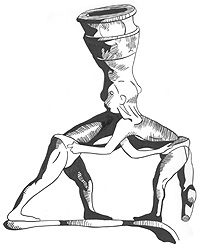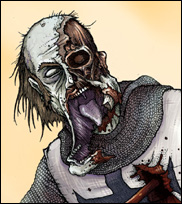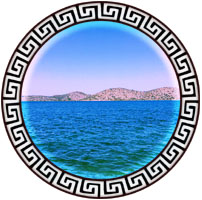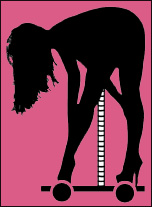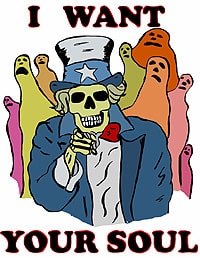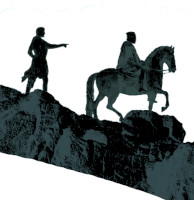In the very same year that Peter Williamson was serving as a colonial soldier, an African boy was kidnapped and sold in much the same manner as he had been a decade earlier. This boy was eventually—like Peter—adopted by a kind master who saw to his education. Olaudah Equiano rose to become a slave owner himself, and eventually wrote his story and campaigned against the abolishment of the practice. In North America, the bulk of unfree labor was never provided by African slaves shipped directly from their homeland aboard slave ships.
The sources for slaves were too diverse to permit this and the harsher working conditions in the tropics siphoned off most of the slave supply to those regions, with the French Colony of San Domingo requiring 113 slave ships per year to keep their slave population stable, as birth rates could not keep pace with labor-induced death and executions.
In contrast to these nightmare plantations of the West Indies, the population of black African slaves in North America was able to increase without significant infusions of fresh caught slaves after 1833. Although few slaves of any kind avoided being worked or beaten to death, or set out in a hut to starve in the woods when they became too old to work, such as Frederick Douglas’s grandmother, American black slave populations were generally able to replace themselves before death, whereas most of the white salves of the 17th century died as child slaves with no issue. The French system was so cruel that it was able to defeat even the heroic Africa breeding rate. Between the practice of breeding slaves [often with the white master and his relatives providing the stud service], the practices of enslaving Indian women and children, kidnapping, indenture, convict transport of whites and the thriving internal America slave market, newly arrived African slaves such as Olaudah were among the least numerous segments of the American slave economy for most years of the practice from 1585 [first Irish slaves at Roanoke serving under Lane] through 1865.
In 1756 Olaudah Equiano was an 11-year-old boy living in an inland agricultural village in what is probably present day Nigeria. He had six brothers and sisters, a mother who adored him as her youngest and adorned him like a warrior when he went out to practice with his javelins. His father owned slaves. When the adults would be out in the fields it was Olaudah’s job to lookout for kidnappers who would steal children away. He recalled an instance when a kidnapper was tied up by the children and held for the adults. Then, one day, two men and a woman got in to the village when the adults were away and carried off Olaudah and his sister.
Olaudah’s story is a long and amazing one; a compelling life of adventure and attainment. To me, as a writer interested in first contact situations, I was most intrigued by Olaudah’s recollections written late in life about his first impressions of the white men who purchased him from his black kidnappers.
Olaudah was familiar with kidnapping and slavery, and saw nothing wrong with it until he met white people. At first he thought, based on their behavior, that the whites were “bad spirits” and intended to eat him. Fellow slaves disabused him of this notion and informed him that they would be taken to a far off country to toil for the whites. Below are a smattering of his childish perceptions of early modern maritime technology and art from his own agricultural animistic perspective:
1. That alcohol [probably rum] was a panic-inducing bad spirit carried into the body through the mouth
2. That whites were especially fiendish people because they devoted such severe measures to preventing slave suicides as to make one think that a true “world of torment” awaited
3. That the whites would beat a boy for refusing to eat seemed especially sadistic
4. That the ocean was a “feared element” at first sight
5. That drowning in the ocean and going down into the depths with whatever spirits lurked there would be preferable to being brutalized by the whites, who shocked him severely when he witnessed one white sailor beaten to death with a rope and then thrown overboard
6. That “the hollow place” (the ship) was a thing of magic that was managed through the sorcery of the white men by dropping anchors into the water, which seem to him to be magical things that somehow extracted favors from the ocean
7. Of the many horrors on the slave ship he regarded the tubs full of human waste in which children sometimes fell and had to be rescued from drowning, to be the worst
8. The navigational instrument known as a quadrant was a thing of wonder to him, which a sailor let him use
9. That the distant clouds over the open sea appeared to be land, which disappeared as they sailed by, convincing him he had entered a magical realm
10. Seeing people on horseback in Barbados convinced him again that whites “were full of magical arts”
11. On noticing that domestic slaves in Virginia “were cruelly loaded with various kinds of iron machines,” including the ‘iron muzzle’ he became dreadful of everything around him in the planters house as some magical device devoted to his confinement. This practice is indicative of a young slave economy [changing over from white slavery] in which generations of servile parents have not been on hand to condition the children to servitude. The longer slavery is in place the less resort to such cruel devices is required.
12. He feared the clock ticking on the wall, and was convinced that it was a magical beast that would tell the master if he had done anything amiss while he was asleep
13. A painting on the wall struck fear into him as it seemed to be looking at him wherever he was in the room. He eventually calmed himself about the painting, reasoning, “I thought it might be some way the whites had to keep their great men when they died, and offer libation as we used to do to our friendly spirits.”
The world of the whites was disconcerting and perplexing to a primitive boy who could understand no language spoken by those around him. This early portion of his narrative allows us to see young Olaudah as an example of human intelligence operating with the aid of curiosity and imagination according to existing references, in the face of numerous new wonders. This portion of his narrative ends on that note, “In this state of anxiety I remained till my master awoke, when I was dismissed out of the room, to my no small satisfaction and relief; for I thought that these people were all made up of wonders.”


